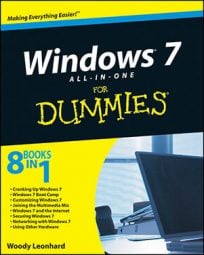Many people resort to using WordPad because they're having issues with Microsoft Word. And, if you really want and need formatting — and you don't have time to get Word straightened out — you can use WordPad to edit Word documents, but you have to be careful. If you don't follow the process just right, WordPad will lose all your existing Microsoft Word formatting.
If Word has slipped into “reduced functionality mode” (because of activation issues), WordPad makes a good temporary substitute. But if you have to edit a Word 97, 2000, 2002, 2003, or 2007 .doc file with WordPad, you need to follow this process to preserve your formatting.
Make a copy of the Word document, and open the copy in WordPad.
Don't edit original Word documents with WordPad. You'll break them as soon as you save them.
Don't use the Save As command in WordPad to make copies of your original Word documents. It's too easy for things to go wrong.
Make whatever changes or edits necessary and save the copy.
Be sure not to save your changes over the original file; you'll need both the copies of the file to get your changes back into Word.
When you get Word working again, open the original document, choose Tools→Compare and Merge Documents.
Pick the WordPad version of the document, and click the Merge button.
The resulting merged document probably looks like a mess, but it's a start.
In Word 2007, go to Review→Compare→Combine and then choose the WordPad version.
Use the Revisions toolbar (for Word 2003 and earlier) or the Review tab (in Word 2007) to apply the changes you made with WordPad.
It is a nuisance, but it's the only reliable way to ensure that WordPad doesn't accidentally swallow any of your formatting.

